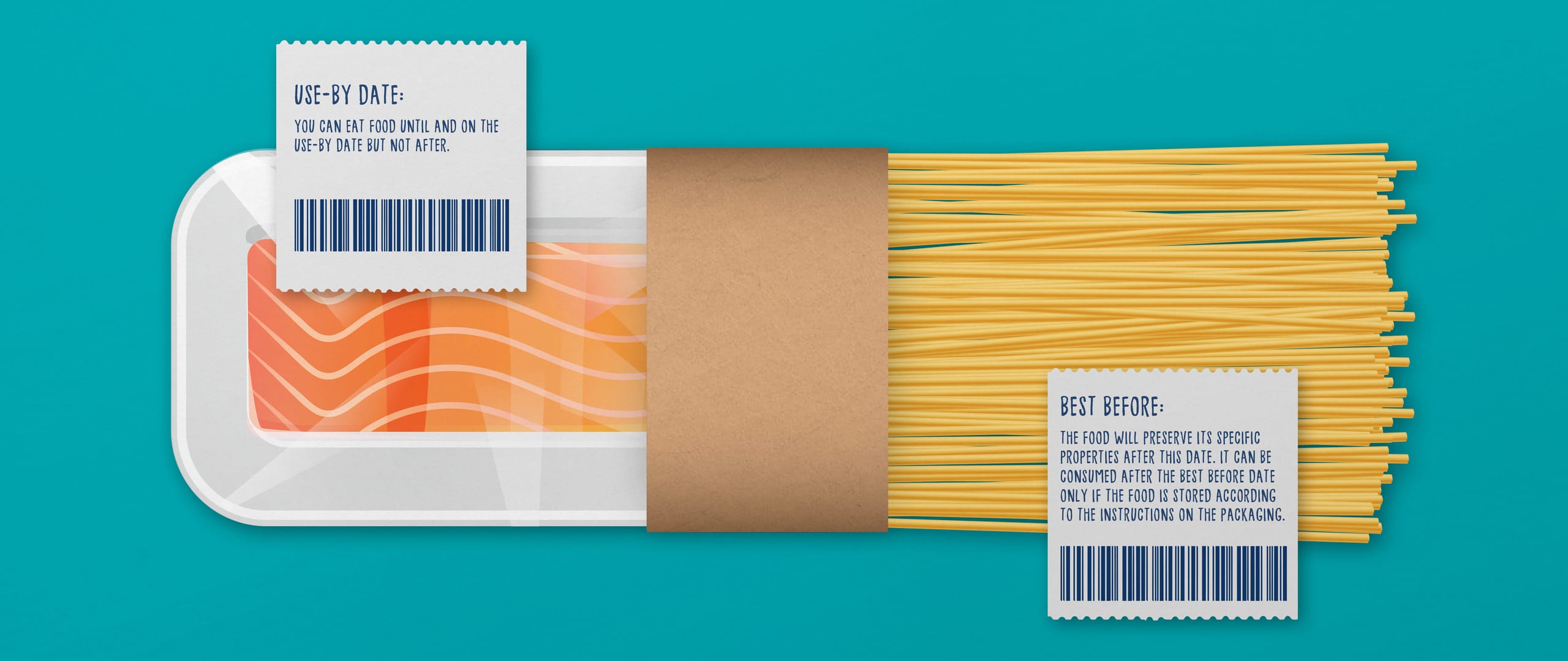Understanding expiration dates to reduce waste
Did you know that 20% of the food waste in UK households is associated with mix-ups with the terminologies of expiration dates? Or that 10% of the 88 million tonnes of wasted food in Europe, every year, are connected to expiration dates?
Many think that “if food is over its expiration date, it can no longer be consumed and have to go to the trash bin.” It does not always have to be so, and the difficulty of interpreting food labels, including expiration dates, can be overcome.
“Use-by” vs “Best before”
Every time an expiration date is on a food product, one of two expressions is used: “use-by” or “best before”, followed by a specific date. Sometimes, dates refer to a particular day, month, or year; other times, they indicate only the month and year.
The difference in language is subtle but very relevant.
-
Use-by date:
A use-by date is associated with the product’s safety and is present in the packaging of perishable goods. It tells consumers the last day to safely consume the product without risk to one’s health. It is not recommended to consume food after its use-by date, as the producers cannot guarantee its safety beyond this date.
Examples of food products marked with a sell-by date are packaged meat and fish, dairy, or fresh soup.

Difference between “Use-by” and “Best before” expiration dates – inspired by a Portuguese Association of Distribution Companies campaign.
-
Best before-date:
The “best before” expression is less rigid than “use-by” and relates to product quality – not safety.
After the best before date, the quality of the food may deteriorate, but the food does not present a health risk. In such a case, it is perfectly safe to consume these products after the best before date, as long as they are stored correctly and for a reasonable period – this information is generally available on the label.
Some examples are spices (may lose some flavour), biscuits (may harden or become stale), or pasta (consistency may alter).
Food waste with an expiration date
When a consumer comes across a product about to reach its expiration date, it is understandable if the option is to choose another package, one with a later expiration date.
But what happens to those products approaching their expiration dates left behind on supermarket shelves?

One of the Jerónimo Martins Group measures to fight food waste is to promote the food products approaching their expiration date. In the Groups’ supermarkets, those products are marked with a clearly visible label and sold at a discount.
Part of the products near the end of their shelf lives are also donated to charities.



